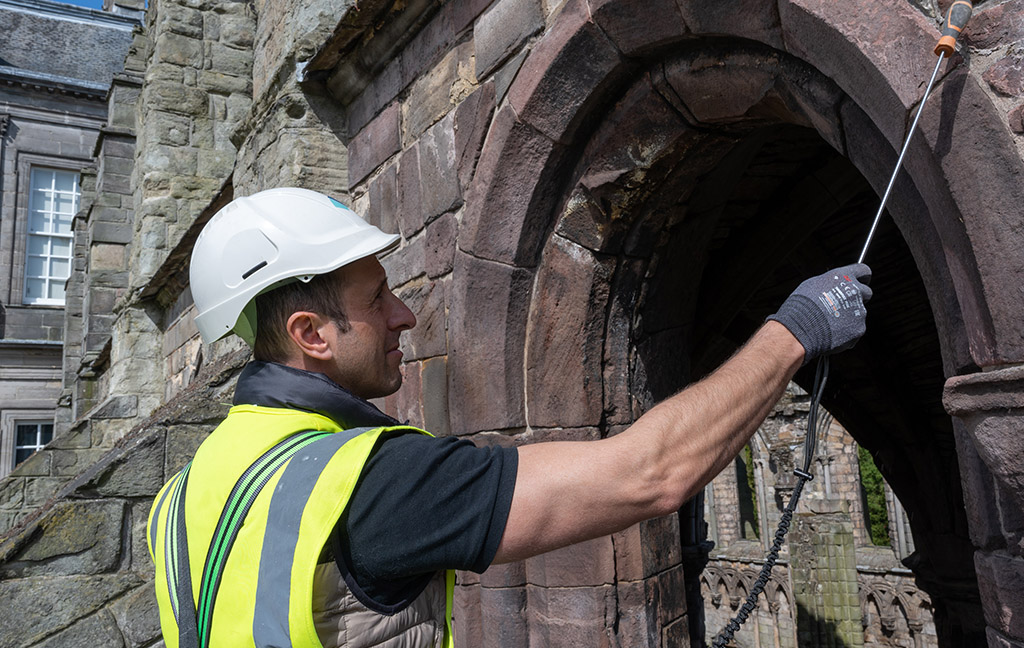Back in the summer of 2020 when we began reopening our castles, abbeys and palaces, we knew this was an important milestone. It was a symbol of hope that there were better times ahead beyond the pandemic. These old buildings were testimony to a sense of the eternal that connects us through the generations, to what makes us human, and to what keeps us moving forward in the face of adversity. But the care of these significant places also poses a growing challenge.
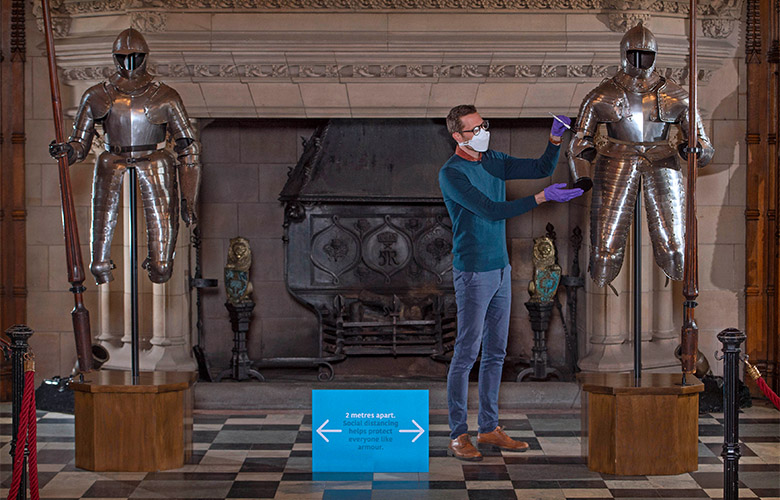
Preparing to reopen Edinburgh Castle in summer 2020.
As we were beginning to open up again, sadly there were some more complications looming on the horizon. Before the pandemic we’d started work on a project which has come to have a significant impact on Scotland’s historic places.
Site teams had become aware of an increase in small pieces of masonry becoming dislodged at a handful of sites. Although we had a programme of rolling inspections and repairs in place, it was becoming obvious that we needed to take a new approach to fully understand and address this.
Years in the planning
In 2019 we recruited a project team to take on the challenge of assessing the condition of sites around Scotland. We prioritised areas where we had concerns that there could potentially be a risk of injury to visitors and staff. This included all properties with masonry over a height of 1.4 metres.
This team was charged with revisiting the guidance and protocols we had in place. Where necessary, they would make new recommendations around inspecting our sites. This also included reviewing existing instructions on how to approach inspections for gravestones, trees, flagpoles, plaques and other features.
The team spent the latter half of 2019 steeped in preparation planning, with the intention of beginning inspections in the spring of 2020. Then the pandemic struck.
In the spring of 2021, we were able to resume inspections safely. These initial inspections discovered there were areas within some sites where the stone and mortar had deteriorated and was potentially problematic. We could not allow visitors and colleagues to keep accessing these monuments knowing that there was a potential risk to life from falling masonry. Legally, we had to mitigate known and likely risks. The quickest way to do that was to restrict access.
Cause and effect
We know that climate change is causing more rain and more storms in Scotland. This is having an impact on buildings of all ages. It is speeding up the decay of our homes, places of work, community buildings and culturally and historically important structures. This is a trend that will continue unless climate change is tackled on a global level. The changes in our climate since the 1960s are having a substantial impact on how we look after the sites in our care.
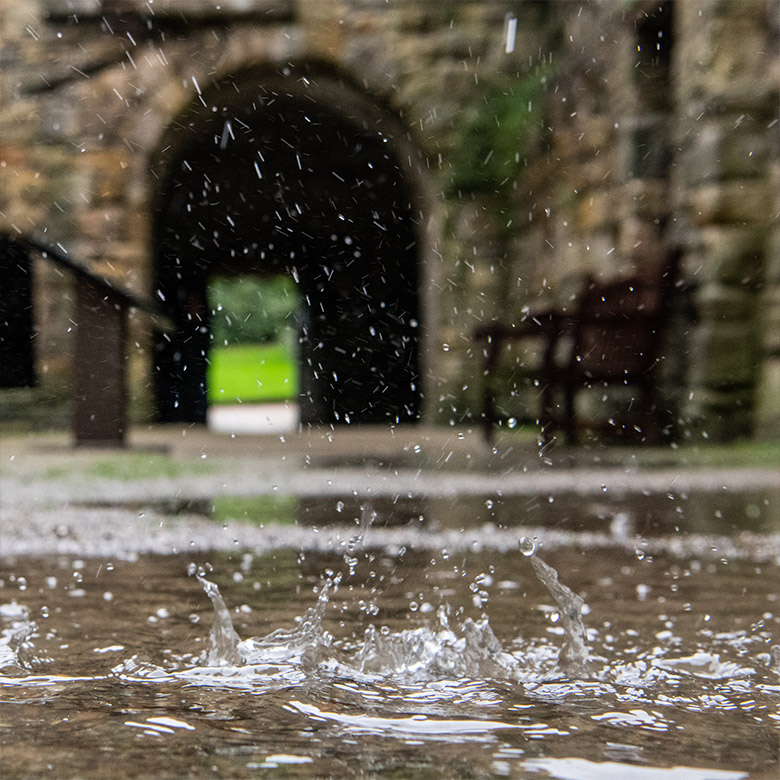
Deep puddles at Inchcolm Abbey on a very wet day. Inchcolm Abbey reopened to visitors in July and history hunters can once again set sail for this very special island in the Firth of Forth.
Also, thanks to the ravages of history – including the Scottish Reformation, sieges, and historic fires – around 30% of the properties we care for are ruinous. That means they’re not as well protected against the elements as more intact buildings. Although measures have been taken to try and keep rain from soaking down into the walls of unroofed buildings, these efforts aren’t as effective as a roof at shedding water away from walls.
Climate change is one factor taking its toll on Scotland’s historic buildings. It is not the only reason, but in combination with other factors it has accelerated the decline. Well-meaning, but unsympathetic repairs by previous generations – such as old cement repairs – are now also causing significant problems.
Raining, plowetery, drookit, smirr
Scotland is famous the world over for its rain. Centuries ago, when these buildings were first built and in use, roofs, gutters and waterspouts diverted rainwater away. This prevented the stonework from becoming saturated. Many would have been harled – covered in a protective layer of lime render – to keep the rain from penetrating the stonework. Many are in locations like clifftops and hilltops. These were great strategic locations in the past for defence and access by sea, but it does mean they are especially vulnerable to the ravages of the Scottish weather.
When water penetrates exposed tops of walls it can cause damage in a number of ways. For example, it can wash away binding materials, like mortar. Saturated walls are more prone to damage caused by freezing and thawing. In our now warmer climate, plants have a longer growing season and readily take hold in the stonework. It can be difficult to clear this increased vegetation growth given the height and ruinous nature of these buildings.
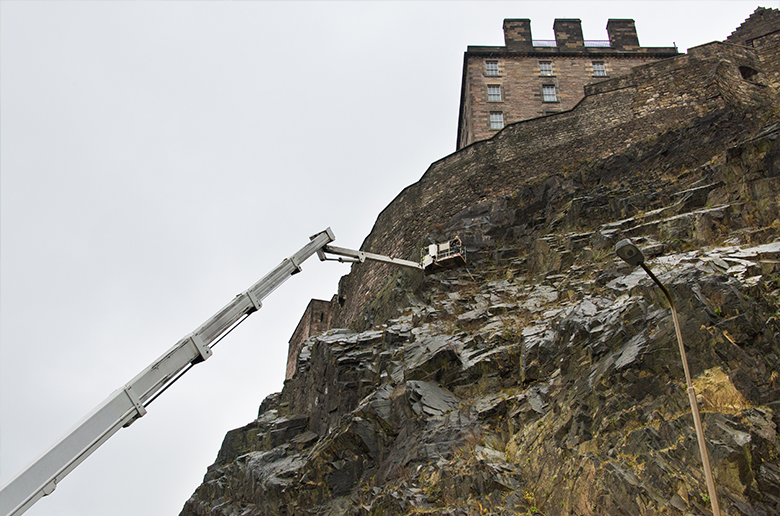
Regular vegetation clearance and loose rock de-scaling at Edinburgh Castle using a 60 metre specialist access platform.
But did you have to close them all at once?
Over the past six months, we’ve often been asked why we couldn’t leave the sites open until we’re ready to inspect them. This simply isn’t an option. There is a clear legal duty for us (and anyone else who manages property which is accessed by staff or the public) to act quickly when a potential risk has been identified. Knowing what we knew about the sites we had inspected, our data suggested a number of our other sites could be harbouring the same issues. Risk factors included sites:
- located in similarly exposed locations
- which were constructed using like materials and similar building techniques
- in a ruinous state
We became particularly concerned about our sites in the south and central part of Scotland where there are lots of sites that share these characteristics. For example, some types of stone are very vulnerable to weathering and climate change is accelerating this.
Between November 2021 and January 2022 we took the difficult decision to put access restrictions in place at more of the sites we care for. It was with a heavy heart that we put in place access restrictions at 70 of our sites.
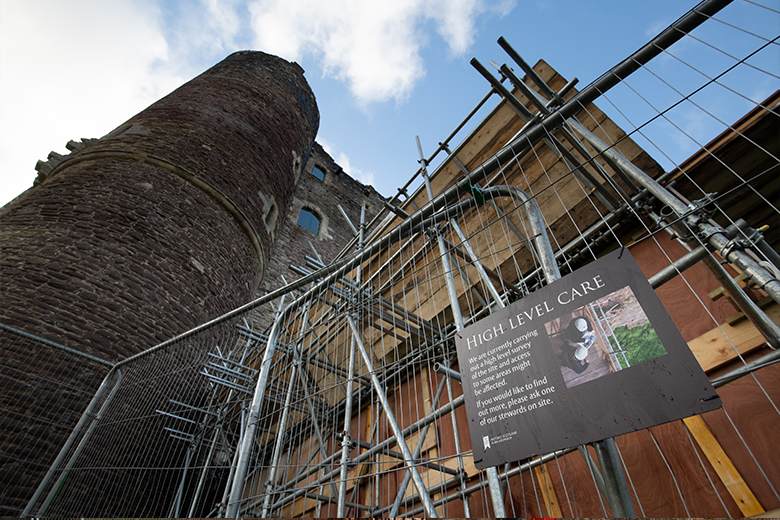
Doune Castle was one of the 70 sites where we had to put in place access restrictions. It reopened in June. Visitors are once again able to explore most of the castle, which has featured in Monty Python and the Holy Grail, Game of Thrones and Outlander.
Getting a glimpse
Although it was dispiriting to have to restrict access at these sites, we have been able to maintain access at 80% of the places we care for. This includes providing as much access as possible at sites where there are restrictions in place. For example, after inspections at Dryburgh Abbey visitors can now access the grounds and graveyard, nave, and the resting places of Earl Haig and Sir Walter Scott. The toilets and shop are also open.
We’ve also been working hard to provide alternative experiences at sites where there are restrictions in place. This includes videos which can be accessed through QR codes, and exhibitions and informative graphics at 15 of our sites. We’ll even be trialling a virtual reality experience of the siege mines at St Andrews Castle. Take a look at our blog on the new interpretation experiences we’ve been putting in place.
Getting permission
Scheduled Ancient Monuments and buildings of national importance have their cultural significance protected by law. And just like anyone else who is responsible for a legally protected property, we have to seek permission before we can carry out work of any kind at the sites we care for. In most cases, we have to secure Scheduled Monument Consent.
Before our conservation team can start carrying out work on these sites, their plans need to be reviewed and endorsed by specialists working independently within our Heritage Directorate. It’s their job to consider the impacts of any changes to a scheduled monument.
In other cases, we’ve also had to seek advice and permission from other bodies with a statutory role. For example, NatureScot has a role in protecting the natural heritage on and around the places we care for. This includes assessing potential impact on the animals, insects and plant life that share our sites.
Starting from a strong base
There are a lot of factors that we need to take into account before starting an inspection. These all add to the planning and timescales.
For example, most of the places we care for are surrounded by buried archaeological remains that aren’t visible above ground. These must not be damaged by heavy equipment, such as access platforms.
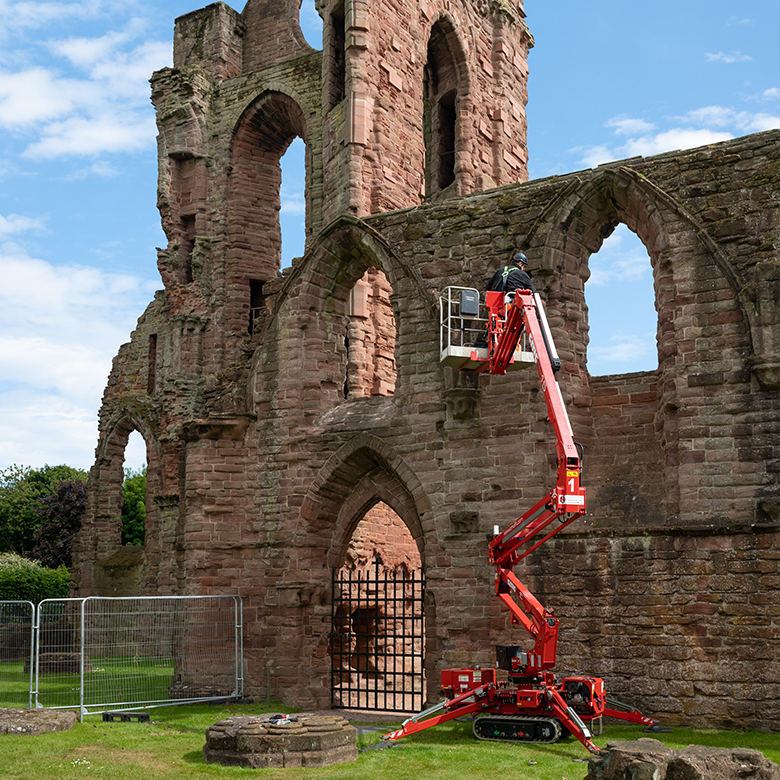
A specialist access platform being used for high level masonry inspections at Arbroath Abbey. Significant restrictions remain in place at the abbey. However, visitors can enjoy the visitor centre, grounds and a new exhibition. They can also visit the Scriptorium – a workplace for writers and artists.
Some sites, like churches or cathedrals, may have unknown burial lairs. These could possibly collapse under the weight of the heavy equipment we need to use. Geophysical surveys can help identify what’s lurking under the ground. These have been carried out in advance of surveys to give a picture of any archaeological remains not visible on the ground.
In other cases, it has been difficult to bring large pieces of equipment on to a site.
At Inchcolm Abbey, the specialist access platform was delivered to the island by boat.
Where we can’t bring in equipment, inspections are being carried out by rope access. For example, at St Andrews Castle, we’ve not been able to bring large pieces of equipment on to the site because the bridge to the site has weight and size restrictions. This means the entirety of the site has to be inspected by a specialist rope access team.
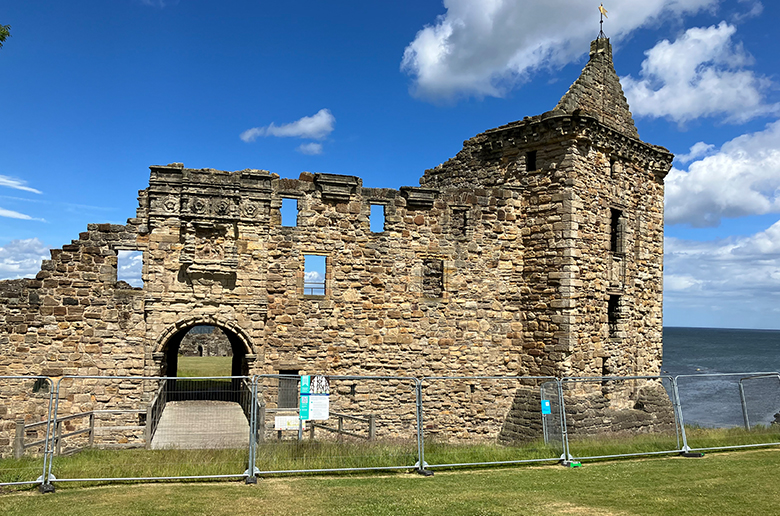
St Andrews Castle, where inspections have to be carried out by a rope access team. We will be opening more of the castle very soon following its recent inspection. In the meantime, visitors can access the visitor centre, exhibition and toilets.
Looking out for our neighbours
Bats, birds, and badgers are all fans of making their homes in Scotland’s historic places. We need to make sure we don’t disturb protected wildlife while we’re carrying out our surveys. We work with organisations like NatureScot to make sure our work won’t have a negative impact on our furry, feathered or creepy-crawly friends.
When we started our inspections at Ravenscraig Castle we found some nesting fulmars. This means we can’t continue our inspections of the castle until September.
Getting to grips with high level inspections
Across the heritage sector, inspections are mainly carried out visually. This could involve specialists inspecting from the ground with binoculars. For a closer look, inspectors could use an elevated platform or, more recently, use a drone.
Our method of thorough tactile inspections of whole buildings is a completely new approach. Our specialists are quite literally getting to grips with assessing the condition of the stonework at our affected sites. They get up to the high areas of the monuments and physically push the stones and mortar to see if anything is loose. This method provides the most accurate information. We expect this will become the gold standard for our sector across the world.
So far, our project team has delivered training to colleagues so more of our staff have the skills to carry out these highly technical surveys. This even involved creating a new Scottish Qualifications Authority qualification, which will be available to learners across the heritage sector.
Our teams assessing the condition of the stonework at Holyrood Abbey.
How long will it take?
The inspections will be carried out as swiftly as possible. This winter, we’re planning to continue carrying out inspections when weather permits. It can be difficult to do the inspections during the winter due to high wind speeds and low temperatures. For example, if gusts of wind exceed 28mph, it’s not safe for our teams to work at height. Any small repairs using lime mortar need to be done when there is no risk of frost. Frost can cause lime mortar repairs to fail or crack and not ‘cure’ or set properly. However, our teams will be out every day they can.
Some properties have complex stonework – carved stones, intricate decoration, or slender window tracery – and will need a programme of more involved repairs to be planned. Some properties are also very large so there is a lot of stonework to check.
For example, we estimate that it will take 45 days for our team to thoroughly check the stonework at Tantallon Castle, 22 days at Rothesay Castle and 30 days at Bothwell Castle.
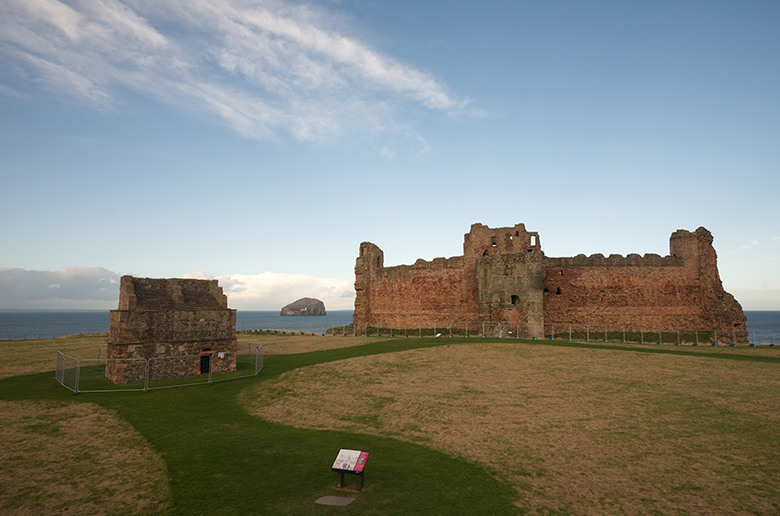
At a large site like Tantallon Castle it will take around 45 days for our teams to inspect all the stonework. Although the castle is out of bounds until we can inspect it, visitors can still visit the grounds and shop.
All in all, it is likely to take a couple of years to carry out the full inspections on the 206 sites with masonry over 1.4 metres and make recommendations for longer term remedial work.
What next?
Thanks to all the hard work and planning of our colleagues, our inspections are on schedule. We’ve already checked our first batch of sites and have been able to restore at least partial access at some of these.
The amount of access we’re able to provide does vary from site to site, depending on what we find during our inspections. For example, there are very few restrictions in place at Craigmillar Castle, but at St Andrews Cathedral we’ve had to be very careful about which areas of the site we can let staff and visitors back into until further conservation works can be carried out.
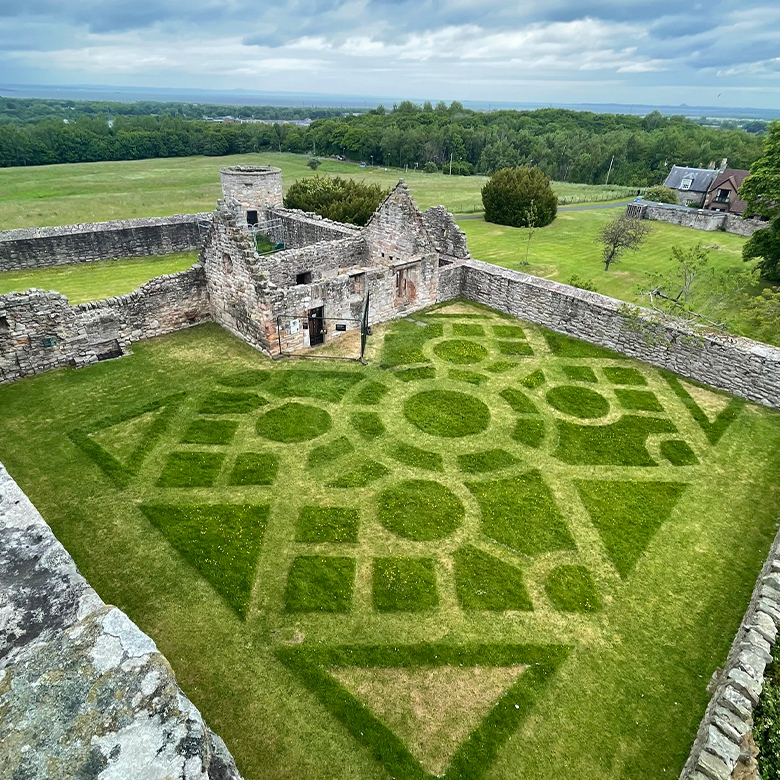
At Craigmillar Castle there are only very minor restrictions in place following its inspection by the team in summer 2021.
The results of our hands-on inspections have been encouraging. So far, we have not discovered any issues that have been a complete surprise. More often than not we’ve been able to carry out a lot of smaller repairs as we go. For example, repairs to slates and lightening conductors, the removal of invasive weeds, and securing high-level stones in a bed of mortar.
Once we’ve carried out inspections and minor repairs at all sites we’ll have a better idea of the extent of the challenge facing us. This will enable us to make informed decisions about which major works to prioritise. We’ll also know more about the resources required to carry out more involved conservation works.
A global conservation challenge
Scotland is not alone in facing these threats to nationally important historic buildings. We are one of the first nations to tackle the issue head on. We’ve received a lot of interest in this project from heritage organisations all over the world and we’ll be sharing our approach and learning with colleagues worldwide.
Find out more
If you’d like to find out more about this massive challenge, you can head to the inspections pages on our website.
Watch a short video about our inspections programme:
We care for over 300 sites and well over 200 of these remain open. Plan your visit.

